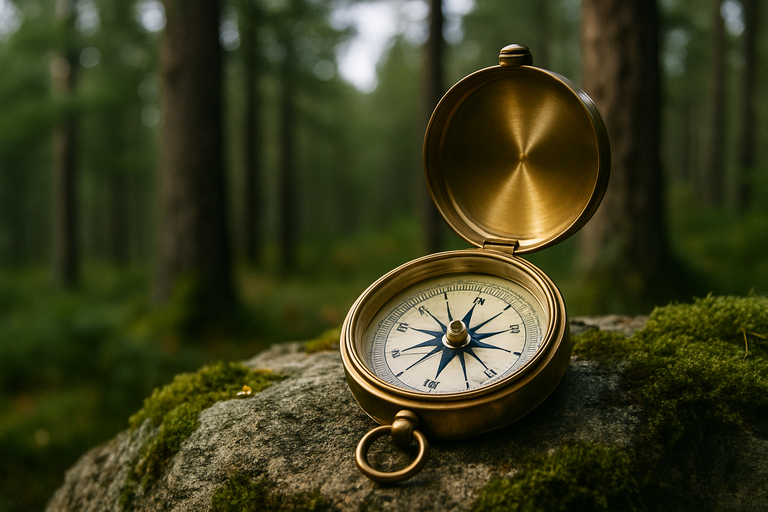Learning the directions of compass is essential for navigation, whether you’re exploring the wilderness or simply orienting yourself in a new city. The four cardinal points—North, East, South, and West—form the foundation of every compass. These primary directions help travelers, hikers, and navigators understand location, distance, and orientation.
In addition, each cardinal direction has three corresponding intercardinal or ordinal points: northeast, southeast, southwest, and northwest. Therefore, the full compass contains eight main directions. For more precision, some models divide the circle further into 16 or even 32 points, making it easier to pinpoint exact bearings.
For instance, when reading a map or following trail signage, knowing the directions of compass can prevent you from veering off course. Moreover, by combining compass skills with other navigation tools like GPS or topographic maps, your spatial awareness improves dramatically. Mastering this knowledge is not just practical—it’s empowering.
History and Evolution
The origins of compass navigation date back thousands of years. Ancient Chinese and Arab explorers relied on magnetic compasses long before modern maps were created. Initially, they only used North and South as reference points, but over time, the system expanded into the full directions of compass used today.
In addition, early navigators identified directions using stars, the sun’s position, and wind patterns. The compass eventually became essential for maritime exploration, changing the course of global travel and commerce. Therefore, understanding its historical significance adds depth to its everyday use.
Over centuries, compasses evolved from rudimentary magnetic needles to sophisticated digital devices with gyroscopic stabilization. Today, even smartphones contain compass apps that help us determine direction instantly. However, despite technological advances, the core principles behind the directions of compass remain the same.
Choosing the Right Orienteering Equipment for Every Adventure
Knowing this history helps us appreciate the importance of compass-based orientation in both ancient and modern contexts. It shows how deeply integrated this tool is with human progress and exploration.

Practical Applications
The directions of compass have numerous real-world applications that go beyond outdoor adventures. For example, architects and builders use compass points to design homes that optimize natural lighting and energy efficiency. By aligning structures with sunrise and sunset positions, energy costs can be significantly reduced.
Moreover, in agriculture, farmers rely on directional planning for planting and irrigation. Crops may require specific sun exposure, and knowing where North and South lie makes it easier to position rows correctly. Therefore, compass use enhances both productivity and sustainability.
In addition, outdoor sports like hiking, hunting, and orienteering depend heavily on understanding compass directions. Whether marking a waypoint or setting a return path, precise direction matters. Even pilots and sailors still train in traditional navigation methods that involve the directions of compass as a foundational element.
These practical uses highlight the ongoing relevance of compass orientation in daily life, professional work, and recreational activities. It’s a timeless skill with endless utility.
Using Directions of Compass in Everyday Life
Although we often associate compasses with wilderness survival, the directions of compass also help in everyday scenarios. For instance, arranging your garden according to sunlight exposure ensures that plants thrive year-round. Knowing which side of your property faces South can determine what to grow and where.
In addition, urban planners use directional data to design city layouts that accommodate traffic flow, optimize street lighting, and reduce energy consumption. Orientation impacts everything from road angles to public space placement. Therefore, even city dwellers can benefit from compass-based awareness.
Compass Tutor: Your Personalized Learning Guide
Furthermore, understanding direction helps when interpreting weather reports. Meteorologists often describe winds in terms of their origin—like a “northeast wind.” Knowing the directions of compass allows you to visualize and prepare for these weather patterns more effectively.
Small changes in how you apply direction can improve comfort, efficiency, and awareness in your surroundings. You don’t need to be an adventurer to appreciate what a compass can offer in your day-to-day routine.

Teaching Kids the Directions of Compass
Introducing children to the directions of compass at a young age builds valuable spatial reasoning skills. For example, teachers can incorporate compass-based games into classroom lessons or outdoor field trips. These activities engage students while helping them understand how direction affects movement and decision-making.
In addition, using physical tools like a magnetic compass or a compass rose on a playground gives children hands-on experience. They learn to associate the sun’s path, shadows, and wind direction with North, South, East, and West. Therefore, learning becomes both visual and interactive.
Moreover, kids who understand direction early on develop stronger map-reading and navigation abilities. These skills transfer well into subjects like geography, science, and even math. Over time, children who are familiar with the directions of compass grow into more confident and independent explorers.
Creating fun, educational opportunities rooted in real-world tools sets a foundation for lifelong learning. Compass literacy doesn’t just teach direction—it builds confidence and curiosity.
Exploring Cultural Symbolism
Throughout history, various cultures have attached symbolic meaning to the directions of compass. In Native American traditions, the four cardinal directions often represent spiritual elements—North for wisdom, East for new beginnings, South for growth, and West for introspection.
In addition, Eastern philosophies like Feng Shui assign attributes to compass points, using them to arrange homes and environments for optimal energy flow. For instance, placing objects or rooms in certain directional zones is believed to influence harmony and balance. Therefore, compass directions are not just functional—they’re deeply symbolic.
Moreover, in literature and art, direction often represents metaphorical journeys. Characters head West in search of freedom or North to face challenges. By understanding the cultural layers behind the directions of compass, we gain a richer perspective on how humans relate to space and movement.
Compass Learning Odyssey: Personalized Learning Success
These symbolic interpretations highlight the universal importance of direction, showing how it transcends function to become part of our collective identity and storytelling.
Directions of Compass in Modern Navigation Technology
Modern navigation systems still rely heavily on the basic directions of compass, despite advances in digital tools. GPS devices, for instance, calculate location and orientation based on satellite data, but they still present information in terms of North, South, East, and West.
In addition, mapping applications like Google Maps and Waze help drivers navigate unfamiliar areas by aligning digital routes with compass directions. Therefore, users benefit from understanding basic compass orientation when interpreting turns, landmarks, or re-routing scenarios.
Moreover, wearable devices such as smartwatches and fitness trackers include built-in compasses for hiking, cycling, and outdoor workouts. These tools enhance navigation accuracy, particularly in environments where mobile signals are weak. Without a foundational knowledge of the directions of compass, users may find these features less effective.
Even the most sophisticated technology can’t replace spatial awareness. Combining digital tools with compass understanding provides a more complete and reliable navigation experience.

How Directions of Compass Influence Architecture and Design
Architects and designers frequently use the directions of compass to improve building orientation and functionality. For example, placing large windows on a building’s southern side can maximize natural light and reduce heating costs in colder climates.
In addition, positioning a home or office to face East may capture morning light, which benefits energy use and personal well-being. Therefore, compass directions influence not only form but also function. In tropical regions, avoiding Western exposure reduces heat absorption and minimizes the need for cooling systems.
Furthermore, outdoor spaces like patios, balconies, and gardens are planned with direction in mind. Landscaping efforts consider sunlight, wind patterns, and drainage based on compass orientation. Understanding the directions of compass allows professionals to design sustainable, efficient, and comfortable spaces.
Designing with direction in mind leads to spaces that are not only aesthetically pleasing but also harmonious with the environment. Thoughtful orientation matters more than ever in eco-conscious construction.
Navigating Without Tools Using the Directions of Compass
In survival situations, it’s important to know how to determine the directions of compass without using digital devices or instruments. For instance, the sun rises in the East and sets in the West, which offers a general sense of orientation during daylight hours.
At night, you can use stars to find direction. In the Northern Hemisphere, the North Star remains fixed in the sky and serves as a reliable marker for North. In addition, certain moss patterns, tree growth, and wind exposure can offer subtle clues about orientation—though they should be used carefully and in combination.
Therefore, developing the skill to read natural signs is not just about preparedness—it builds confidence in navigating any environment. When devices fail, the human mind, paired with knowledge of compass directions, becomes the ultimate navigation tool.
Moreover, these methods strengthen your connection with nature. By observing the world around you closely, you learn to move more intuitively and independently through space.
Final Thoughts on Mastering the Directions of Compass
Learning the directions of compass provides more than just the ability to navigate from one place to another. It empowers people to explore, to plan, and to connect with the world around them more meaningfully. Whether you’re building a home, teaching your kids about nature, or hiking through a mountain range, compass directions guide your decisions and enhance your awareness.
In addition, this knowledge bridges technology, history, science, and culture. From ancient sailors to modern architects, countless professionals rely on directional understanding to do their work effectively. Therefore, mastering this simple yet powerful concept has lasting benefits across all areas of life.
Furthermore, developing spatial orientation skills improves critical thinking, safety, and independence. It helps you read landscapes, predict weather, and use time more efficiently. The ability to align yourself physically with the planet builds confidence in every outdoor or logistical endeavor.
By embracing the directions of compass, you unlock not just a tool—but a mindset. It is a way of moving through the world that is informed, aware, and intentional. And in today’s fast-paced world, that kind of clarity is more valuable than ever.

